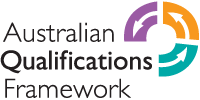CLET RPL is Helping Military and Police Transition with Conf...
This unit describes the skills and knowledge required to assist with establishing and maintaining workplace compliance with work health and safety (WHS) laws. It includes identifying applicable WHS laws, duties, rights and obligations, and the necessary actions to ensure WHS compliance in the workplace.
It also includes assisting with providing advice about the legislative duties, rights and obligations of individuals and parties prescribed in WHS laws and those of WHS regulators.
The unit applies to those working in a broad range of WHS roles across all industries.
NOTES
1. The terms ‘occupational health and safety’ (OHS) and ‘work health and safety’ (WHS) are equivalent, and generally either can be used in the workplace. In jurisdictions where model WHS laws have not been implemented, registered training organisations (RTOs) are advised to contextualise this unit of competency by referring to existing WHS legislative requirements.
2. The model WHS laws include the model WHS Act, model WHS Regulations and model WHS Codes of Practice. See Safe Work Australia for further information.
No licensing, legislative or certification requirements apply to this unit at the time of publication.





